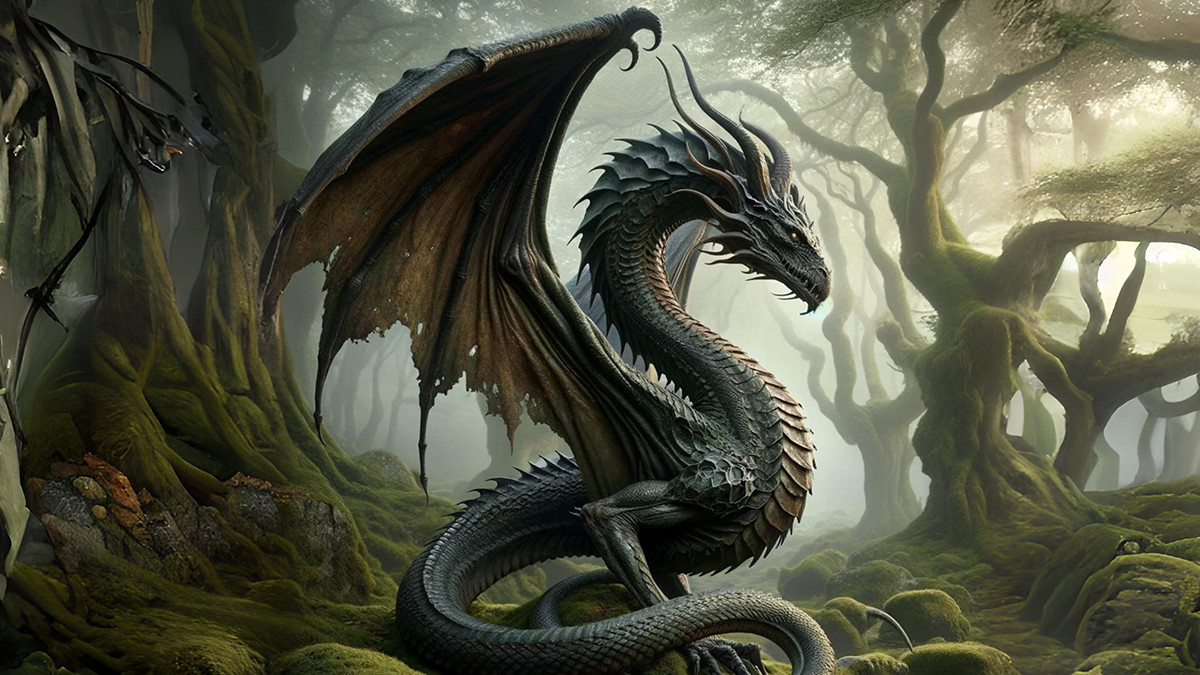The wyvern is a dragon-like creature popular in European folklore. It is a two-legged, winged beast with the tail of a serpent that can fly and breathe fire like a dragon. The main difference from dragons is that the wyvern has only two legs instead of four.
Some scholars state that in pre-Christian times, the wyvern dragon was seen in a positive light; it was a bringer of life and a protector of lands. However, after the establishment of Christianity, the creature came to represent evil forces. It became a vicious predator associated with war, pestilence, famine, and the devil.
To put it simply, a wyvern generally has the same features as a dragon, except it has only two legs instead of four. However, it is often described as a chimeric beast, meaning it comprises body parts from other animals. In this case, it has bird legs, a barbed tail, a serpent’s body, a dragon’s head, a bat’s wings, the talons of an eagle, and occasionally horns on its head.
The legend of the wyvern of Mordiford
Wyvern-type creatures are common in many cultures, but the wyvern itself is most associated with Britain and Ireland. The most common legend about a wyvern centers on the English town of Mordiford and a little girl named Maud. The story explains how Maud stumbled across a baby wyvern in the woods near the town. The tiny creature jumped out at Maud from some overgrowth; it was as green as grass and had a slender, pointy tail. It had two wings and two legs, just like a bird, but Maud was most captivated by the creature’s eyes, which dazzled like two stars.
Maud took the baby wyvern home to her horrified parents, who knew exactly what it would grow up to be. Her father wanted to kill it immediately, but he decided against it because his daughter became very upset. Later that night, Maud overheard her parents discussing how to get rid of the wyvern. The girl decided to hide the wyvern in the woods and began feeding it milk. Unfortunately, the dragon grew to adulthood and was no longer satisfied with milk; it began craving flesh. The killer wyvern started slaughtering the town’s livestock and even attacked one of the farmers. However, the wyvern never harmed Maud, whom it considered its only friend. Most versions of the tale state that one of the town’s noblemen eventually killed the wyvern with an arrow, leaving Maud inconsolable.
The wyvern commonly features in old and new heraldry
The wyvern appears regularly within Heraldry and other coats of arms. Dragon-type creatures are very common in heraldry and usually symbolize the represented family’s victory over satan and its demonic forces. Traditionally, the wyvern is depicted on crests, standing on its legs with the body curling away into its tail. Occasionally, it is portrayed standing on its tail with its claws in the air, a motif traditionally common among supporters of the Duke of Marlborough. In some rare instances, crests have depicted the wyvern without wings and with its tail tied in a knot.
The creature is still used in modern crests representing schools, universities, and athletic organizations, mainly in the United States, Canada, and the United Kingdom. The wyvern is mainly portrayed as red or gold in this type of heraldry.
According to the Merriam-Webster dictionary, the word wyvern derives from the Latin word vipera, meaning viper. Obviously, the creature more closely resembles a dragon than a snake. The first recorded use of the word was in the 17th century, about 400 years after the dragon was recorded. It is sometimes spelled wivern.
References
Bane, Theresa. “Encyclopedia of Beasts and Monsters in Myth, Legend and Folklore.” Pub.: McFarland, Incorporated, (2016). Accessed August 1, 2024.
Devlin, James Dacres. “The Mordiford Dragon.” Pub.: John R. Smith; Effingham Wilson, (1848). Accessed August 1, 2024.
Fox-Davies, Arthur Charles. “A Complete Guide to Heraldry.” Pub.: T.C. & E.C. Jack, (1909). Accessed August 1, 2024.
Merriam-Webster.com, “Wyvern,” accessed August 1, 2024.
